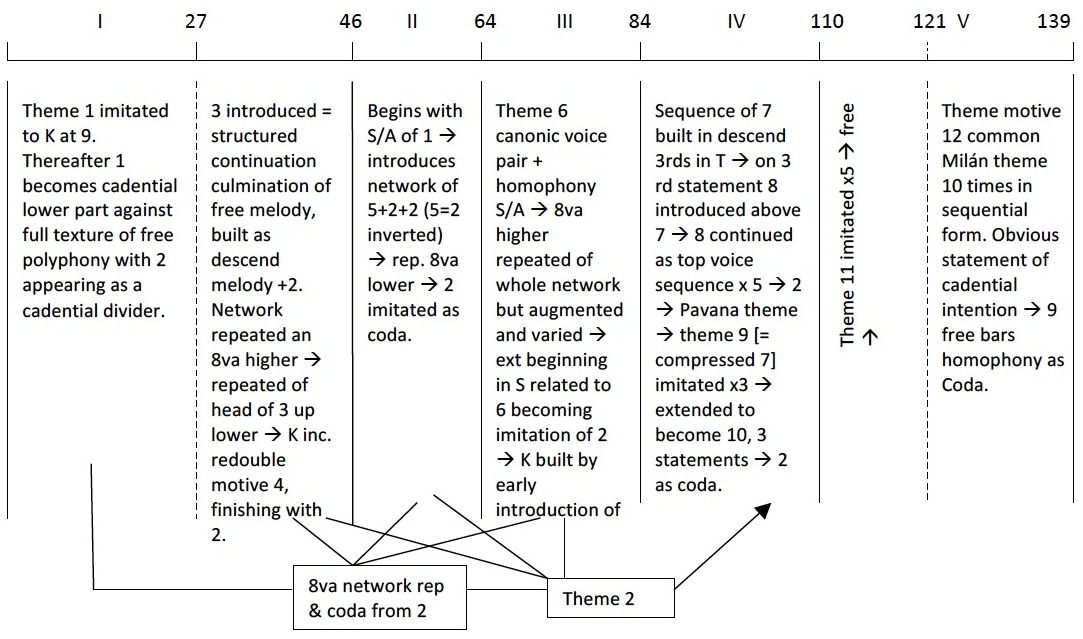| Source title | Esta fantasia que se sigue es del tercero y quarto tono:y porque va por los terminos delos dichos tonos se le dira mixto:y ha se de tañer ni muy apriessa ni muy a espacio sino con vn compas bien mesurado. |
|---|---|
| Title in contents | |
| Text incipit |

Music
Category abstract
Genre fantasia
Fantasia type ImP
Mode 3+4
Voices 4
Length (compases) 139
Vihuela
Tuning A
Courses 6
Final VI/0
Highest I/10
Lowest VI/0
Difficulty not specified
Tempo medium
Song Text
Language
Vocal notation
Commentary
Polythematic, imitative fantasia of broadly Milán’s general style. It has particular features, however, which mark it off from Milan’s mainstream. The feel of the work is much more vocally inspired, particularly in section I. Although the section has a common number of themes and motives, it is largely through composed until compass 27, with longer phrases than usual, and a full-bodied texture. The work immediately assumes a breadth and depth quite removed from his often frivolous mood. The style is reminiscent of Spanish canciones and villanescas, and even sad romances. Mode and cadence help. A rhythmic cell of dotted minim—crotchet—minim (ascending & descending) unifies the free top voice of I. The work becomes increasingly instrumental in itw conception as it progresses. Thematic unity, and use of theme 2 in the thematic development provide some untiy. Milán’s rubric indicates that “this next fantasia is in the third and fourth modes, and because it is set in this way it will be called mixed: and it should be played neither very quickly or very slowly but with a well-measured beat.”
